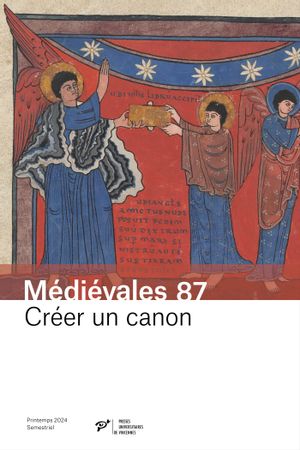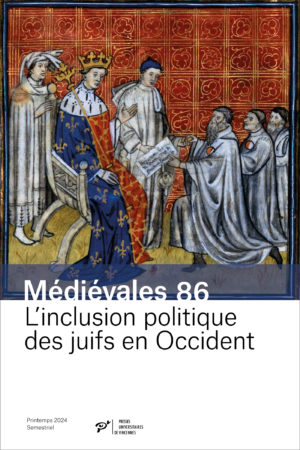Emmanuelle SANTINELLI : « Continuity or Fracture ? Adoption in Merovingian Law »
Adoption was an essential and permanent reality throughout the history of Roman antiquity. Later, during the Merovingian period, adoption came to play a secondary role as henceforth marriage constituted the main basis for constructing family alliances. Merovingian Iaw saw adoption in the form of adoptio in hereditatem or a ffatomie the practice of which is attested to by documents and narrative sources. However, considering the sparsity of concrete examples which have come down to us, the reality of adoption seems to have been a marginal one.
Constantin G. PITSAKIS : « Adoption in Byzantine Law »
In Byzantine Law (Justinian and Basilica) as well as in practice, a constant presence of the institution of adoption has been noted. In short, it may be said that in Byzantium this institution resembles the form of simple adoption found in Western doctrine, rather than that of full adoption. Specifically Byzantine innovations are extensions of the right to adopt to aIl childless persons, including women and eunuchs, and the introduction of a religious form of adoption, the practice of which, however, was not widespread prior to the Ottoman domination.
Annita GUERREAU-JALABERT : « What is the Meaning of adoptio in Medieval Christian Society ? »
The analysis of contexts where terms belonging to the adaptio family appear shows that, in medieval Latin, these terms referred to a, set of social relationships which change when these same terms are used in classical Latin or contemporary French. The aim of these relationships is not so much to create an anologon of the ties of legitimate filiation, as to implement various ways of ensuring caritas and spiritual parenthood. This shift in meaning finds its social logic in the evolution of the structures of kinship particular to the Christian West and its conceptual logic, in a reflection upon the nature of divine paternity regarding Christ and Christians.
Franck ROUMY : « Adoptio naturam imitatur : The Scope and Consequences of an Aristotelian Maxim in Medieval Juridical Thought (l2th-l5th Centuries) »
Starting with a maxim set down by Justinian law which stigmatized the necessary difference of age between the adopter and the adoptee, medieval jurists succeded, within a few centuries in entirely reconstructing the legal rules pertaining to adoptive filiation If according to them the latter had to « imitate nature » in every way, it was to better conform to a divine order of the universe materialized by the legitimate procreation within marriage. An indirect result of this concept was the exalting of blood connections, which led to the relegation to the background of adoptive filiation henceforth judged inferior to natural filiation.
Juan Vicente GARCIA MARSILLA : « Adoption in Spanish Legal Texts of the thirteenth Century »
The return to Roman law that took place in the thirteenth century has its expression in the Spanish Laws particularly in the Partidas of the Castilian king Alfonso el Sabio, and the Valencian Furs. Adoption had its place in these texts and was brought under specific regulations. Despite the clerical hostility that saw adoption as a negative practice opposed to their interests, the monarchy sought to introduce adoption to guarantee the stability and continuity of noble families. However, Hispanic medieval society had already developed other familiar strategies, and adoption did not have the success that the kings had expected.
Thomas KUEHN : « Adoption in Late Medieval Florence »
As distinct from forms of informal adoption – most notably the fostering of foundlings – formal legal adoption based on the Roman civil law and which resulted in the creation of, patria potestas was an extremely rare event in late medieval Florence. The main reason seems to have been the Florentine prejudice toward blood or a sense that law could not change the real and natural. Even within the learned ius commune jurists had clearly limited the capacity of legal adoption, to rewrite the « facts » of birth and blood. The statutes of Florence did not mention adopted persons, and very few emerge in Florentine records, in comparison to the numbers of (stilI blood-related) bastards and their occasional legitimations as heirs.
Philippe MAURICE : « The Adoption and Donation of Children in Gévaudan in the Late Middle Ages »
In medieval Gévaudan, one testator out of five hundred declares having adopted a child. If we know nothing of the process of the adoption of legitimate children by a stranger, that of the donation and reception of bastards reveals that the notaries of Gévaudan, like those of Provence, used a form of inter vivos donation, and placed the reception of bastards and adoption in a same category of social practices.
Isabelle GARREAU : « Eustache and Guillaume or the Literary Mutations of a Life Story and of a Romance »
Within the temporal framework of the late twelfth century, this article examines the interchange of modes of writing that existed between hagiography and romance. These reciprocal infiltrations, of a literary and ideological nature are the tangible traces of the conflicts of the imaginary between the Church an the lay aristocracy. Two examples, the Vie de saint Eustache and Chrétien de Troyes’tale Guillaume d Angleterre, serve to analyze the mechanisms of novelistic construction and romantic adaptation as well as the complex relationships between the figure of the saint and that of the hero.
Henriette BENVENISTE : « Pride, Despair and Memory The Jewish Narratives of the First Crusade »
from the study of the Jewish narratives of the first crusade, which recount the massacres of Jewish communities in the Rhineland in 1096, four thematic components emerge : the concept of trial which banishes all shadow of guilt or sin, that is to say, the idea of a collective suffering experienced as an intellectual perfecting ; the memorisation of the names of the dead, a means of channeling collective memory the image of the Temple and of sacrifice, a sacrifice to God and to the symbolic community ; and lastly, the ritual war, a war of narratives and of insults. These narratives, the fruit of a long literary tradition and an intense religiosity, evidence a new intolerance, and a new relationship between the Jews and their God, placed under the auspices of pride.
François FORONDA : « The King Finds a Cousin : the Letters of Louis Xl to Antoine de Chabannes »
The letters addressed by Louis XI to Antoine de Chabannes help gain insight into fictive kinship and the reasons which govern its use and manipulation. founded on service, nurtured on loyalty and trust, the cousinship accorded by Louis XI to his « Grand Maître » is also expressed in the phrases of designation. These lexical variations betray a strategy of distinction which tends to reproduce within the order of the discourse the veritable position of the count of Dammartin. Sometimes considered as close of kin by blood and alliance he is at other times relegated to the circle of simple servants. The play on adjectives and adverbs thus reveals the foundation on which fictive kinship rests : a choice which can be subject to change.






